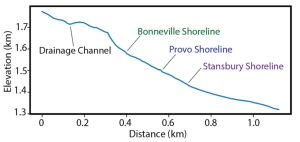We just wrapped the final class for GEOSC 497-001, Mars Sedimentology! This was a mixed grad-undergrad project-based course I designed to introduce students to real Mars datasets, advanced concepts in sedimentology, some basic statistical methods, and a bit (a lot) of ArcGIS and Python. Over four ~month-spanning projects, we learned about channel-belt stacking in alluvial strata, the mechanisms behind branching patterns in river deposits, the topography and internal structure of river deltas, and the kinematics of submarine channels.
The real stars of the show were the topographic datasets, particularly from HiRISE stereo data. Stereo topography, especially at this resolution, is what makes quantitative sedimentological approaches possible with orbital data.

I think – and hope – that each student got something unique out of this class. We had a total of 8 guinea pigs representing undergrad and graduate geoscience students, as well as undergraduate astronomy majors with a planetary science focus. I imagine different aspects of the course mattered in different ways to these different students.

To me, the most important take-home is that, where we see sedimentary deposits on Mars, there is a high likelihood that those deposits are time-integrated! That is, we’re not viewing a frozen-in-place landscape dating back to ancient Mars, but rather exhumed sedimentary deposits with a lot of evolution through time wrapped up in their geometry. These students now know how to test that idea, and how powerful having this time-evolution component can be in understanding these ancient martian environments!
I’m already looking forward to improving things, streamlining the experience, and teaching Mars Sedimentology again in Spring 2025. To Penn State students interested in taking this Geosciences course next year, we accommodate a wide array of scientific backgrounds.
A big thanks to those who participated this semester, including
-Ben

